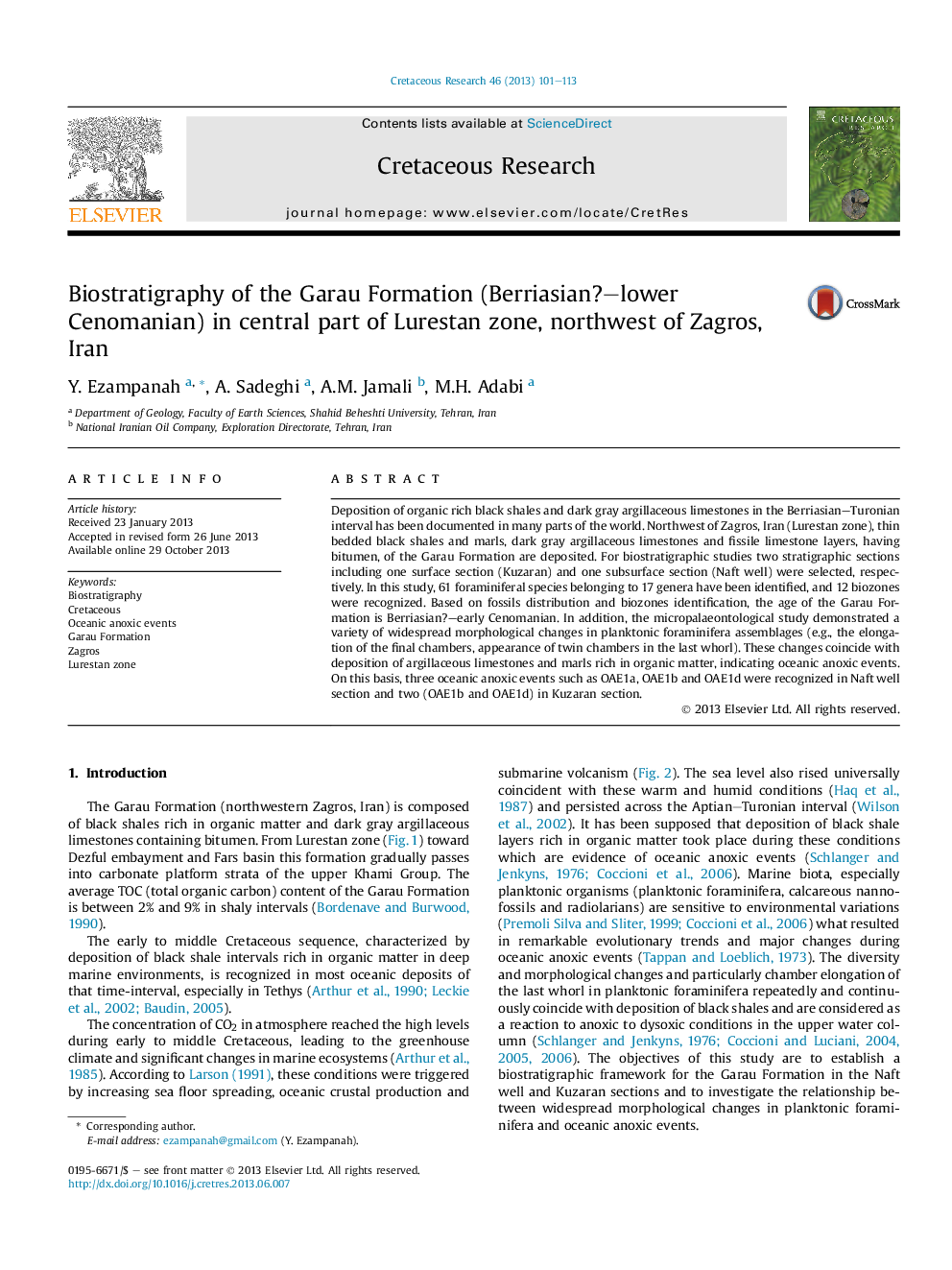| Article ID | Journal | Published Year | Pages | File Type |
|---|---|---|---|---|
| 6448311 | Cretaceous Research | 2013 | 13 Pages |
Abstract
Deposition of organic rich black shales and dark gray argillaceous limestones in the Berriasian-Turonian interval has been documented in many parts of the world. Northwest of Zagros, Iran (Lurestan zone), thin bedded black shales and marls, dark gray argillaceous limestones and fissile limestone layers, having bitumen, of the Garau Formation are deposited. For biostratigraphic studies two stratigraphic sections including one surface section (Kuzaran) and one subsurface section (Naft well) were selected, respectively. In this study, 61 foraminiferal species belonging to 17 genera have been identified, and 12 biozones were recognized. Based on fossils distribution and biozones identification, the age of the Garau Formation is Berriasian?-early Cenomanian. In addition, the micropalaeontological study demonstrated a variety of widespread morphological changes in planktonic foraminifera assemblages (e.g., the elongation of the final chambers, appearance of twin chambers in the last whorl). These changes coincide with deposition of argillaceous limestones and marls rich in organic matter, indicating oceanic anoxic events. On this basis, three oceanic anoxic events such as OAE1a, OAE1b and OAE1d were recognized in Naft well section and two (OAE1b and OAE1d) in Kuzaran section.
Related Topics
Physical Sciences and Engineering
Earth and Planetary Sciences
Palaeontology
Authors
Y. Ezampanah, A. Sadeghi, A.M. Jamali, M.H. Adabi,
